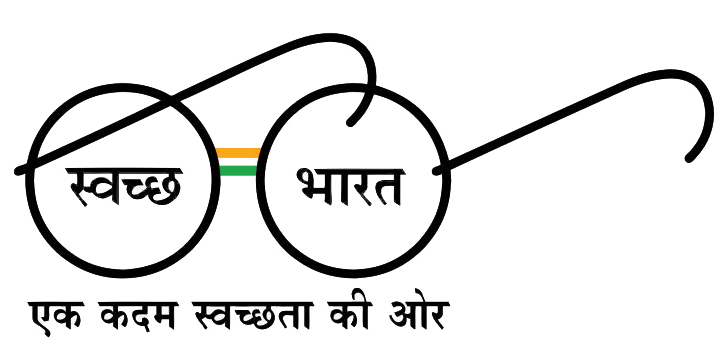In this article, we are going to talk about the Different Provisions to settle NPAs. So, first, we are going to talk about Lok Adalat. So, it is a special kind of court that can settle all NPAs and so, the borrower and the bank. They can just go into the court. So, that, the NPAs can be resolved and the settlement can arrive at. The Lok Adalat is governed by the legal services authority act, 1987 and the maximum limit is 20 lakhs.
Debt Recovery Tribunal (DRT & DRAT).
The next thing is the Debt recovery tribunal (DRT) and the Debt recovery appellate tribunal (DRAT). So, bank bc apply online these are tribunals which are some kinds of special courts, which help the banks or the financial institutions to resolve the NPAs, and these are governed by the RDDBFI act or the recovery of debts due to banks and financial institutions act,
2016. This was framed by the Tiwari committee and the pecuniary limit is a minimum of 20 lakh. So, this means that for going into the DRT, you need to have at least a minimum of 20 lakh outstanding so that, you can go ahead and approach DRT and below 20 lakhs, you can of course settle in the Lok Adalat that we just now saw. The debt recovery tribunal (DRT) is headed by a presiding officer.
READ MORE:- Evolution of Banking Sector in the 90s.
So, the qualification of a presiding officer is that the person must have been a district court judge and the tenure of appointment is 5 years or till the age limit of 65 years is attained and the appeals against the debt recovery tribunal can be made in the debt recovery appellate tribunal within 30 days. So, if you are not happy with what the DRT has ruled, then, you can go ahead and approached it and they are going to hear your case and the chairperson.
So, the chairperson heads DRAT and that person’s minimum qualification must be a high court judge and the tenure must be three years or the age limit of 70 years.
Insolvency and the Bankruptcy Code (IBC) 2016.
So, we have IBC 2016, or the insolvency and bankruptcy code of 2016. So, basically for the IBC 2016, it is a time-bound process for insolvency resolution and now this is very new so before the IBC, the RBI used to have many kinds of schemes to resolve the NPAs.
So, we used to have the CDR or the corporate debt restructuring, then, we used to have SDR which means the strategic debt restructuring, then, we have S4A or the scheme for sustainable structuring for stressed assets and we also have the 5:25 scheme and the JLF or the Joint Lenders Forum. So, these different kinds of schemes were canceled by the RBI after the IBC came and the IBC is the only thing that is right now used.
So, now we can do the insolvency resolution of the companies and the individual and the minimum limit is 1 lakh and the time limit is also very important, it is now 330 days. Earlier, this time limit was 270 days but later, 60 days were added in the 2019 amendment. So, now 330 days maximum you can take to add & release all cases under the insolvency and bankruptcy code.
READ MORE:-SBI Home Loan 2023 – घर बनाने के लिए लोन यहाँ से तुरंत मिलेगा आवेदन करने की पूरी प्रक्रिया जाने
Insolvency professional (IP).
There is something called the insolvency professional or the IP. Now, the insolvency professional can sell the assets of the company and they can take over the company as well and try to resolve all of the various kinds of things .csp bank So, they can help in the resolution process and the 2 Adjuvating authorities.
National Company Law Tribunal (NCLT).
So, there is something called the National company law tribunal or the NCLT. These are for the corporate and the limited liability partnership firm. So, corporate or the LLPs can go ahead and get the resolution on the NCLT and for the individuals of the partnership firms. you can go ahead with the debt recovery tribunal.
You can appeal against the DRT and the NCLT. So, for the NCLT appeal, they go to the National company law appellate tribunal and for the DRT complaints, they go to the debt recovery appellate tribunal. So, these two tribunals have been set up for that purpose, and the insolvency and bankruptcy board of India (IBBI) are the regulatory body for the insolvency process. So, they are the insolvency regulator and they have 10 members from the ministry of finance, ministry of law and justice, ministry of corporate affairs, and the RBI and the chairman of the IBBI is MS Sahoo. The Justice Committee has recommended the NCLT. So, that all about the insolvency and bankruptcy code.
So, these were different provisions to settle NPA.
How do you settle an NPA?
An NPA (Non-Performing Asset) is a loan or advance for which the borrower has defaulted on the payment of interest or principal or both. The following are the ways to settle an NPA:
- One-time settlement (OTS): This involves the borrower paying a lump sum amount to the lender to settle the outstanding debt. The OTS amount is usually a negotiated amount that is lower than the original loan amount.
- Debt restructuring: This involves the lender and borrower negotiating a new repayment plan, which could include extending the loan tenure, reducing the interest rate, or converting a portion of the debt into equity.
- Sale to asset reconstruction companies (ARCs): The lender can sell the NPA to an ARC, which specializes in resolving NPAs. The ARC then takes over the management of the NPA and tries to recover the debt by selling the collateral or by restructuring the loan.
- Legal action: If all other options fail, the lender may resort to legal action to recover the debt, such as filing a lawsuit or invoking the security pledged by the borrower.
Top of Form
What is one time settlement in NPA?
One-Time Settlement (OTS) is a mechanism for resolving Non-Performing Assets (NPAs) in the banking sector. It is an agreement between the borrower and the lender in which the borrower pays a lump sum amount to settle the outstanding debt. This amount is usually a negotiated amount that is lower than the original loan amount.
OTS is used as an alternative to the traditional debt recovery process, which is often time-consuming and costly. It allows both the lender and the borrower to resolve the NPA and close the account in a relatively short period.
The OTS process usually involves the lender offering a one-time settlement to the borrower, who must agree to the terms and make the payment within a specified time period. In return, the lender agrees to write off the remaining debt and close the account.
Note: The availability and eligibility criteria for One-Time Settlement may vary depending on the bank, so it is advisable to check with your bank for specific details and conditions. Additionally, the OTS process must be in compliance with the relevant laws and regulations.
READ MORE:-SBI CSP Online Apply,2023 Commission|SBI CSP कैसे खोले पूरी जानकारी।
What is the meaning of NPAs?
NPA stands for Non-Performing Asset. It is a loan or advance for which the borrower has defaulted on the payment of interest or principal or both. An NPA is an asset that has stopped generating income for the lender, as the borrower is not making timely payments.
In the banking sector, NPAs are considered a major challenge as they lead to a reduction in the banks’ profits and affect their financial stability. The accumulation of NPAs can also result in a shortage of funds available for lending, which can limit the ability of the bank to support economic growth.
Lenders typically classify a loan as an NPA if the borrower has not made any payments for a specified period of time, which is usually 90 days or more. The classification of an NPA depends on the terms and conditions of the loan agreement and the relevant laws and regulations.
What do you mean by NPAs?
NPA stands for Non-Performing Asset. It is a loan or advance for which the borrower has defaulted on the payment of interest or principal or both. An NPA is an asset that has stopped generating income for the lender, as the borrower is not making timely payments.
In the banking sector, NPAs are considered a major challenge as they lead to a reduction in the banks’ profits and affect their financial stability. The accumulation of NPAs can also result in a shortage of funds available for lending, which can limit the ability of the bank to support economic growth.
Lenders typically classify a loan as an NPA if the borrower has not made any payments for a specified period of time, which is usually 90 days or more. The classification of an NPA depends on the terms and conditions of the loan agreement and the relevant laws and regulations.
what is NPAS
NPA stands for Non-Performing Asset. It is a loan or advance for which the borrower has defaulted on the payment of interest or principal or both. An NPA is an asset that has stopped generating income for the lender, as the borrower is not making timely payments.
In the banking sector, NPAs are considered a major challenge as they lead to a reduction in the banks’ profits and affect their financial stability. The accumulation of NPAs can also result in a shortage of funds available for lending, which can limit the ability of the bank to support economic growth.
Lenders typically classify a loan as an NPA if the borrower has not made any payments for a specified period of time, which is usually 90 days or more. The classification of an NPA depends on the terms and conditions of the loan agreement and the relevant laws and regulations.
does npas report to credit bureaus
Yes, NPAs (Non-Performing Assets) can be reported to credit bureaus. The credit bureaus collect information from various sources, including banks, financial institutions, and other lenders, to create credit reports on individuals and businesses.
If a borrower defaults on a loan, the lender may report the loan as an NPA and this information can be included in the credit report of the borrower. This can have a negative impact on the borrower’s credit score and affect their ability to obtain credit in the future.
It is important to note that the reporting of NPAs to credit bureaus varies depending on the jurisdiction and the credit bureau. Some credit bureaus may not include information on NPAs or may only include the information for a certain period of time. It is advisable to check with the relevant credit bureau for specific details and conditions.
what is npas solutions
There are several solutions to deal with NPAs (Non-Performing Assets) in the banking sector:
- One-Time Settlement: Banks can offer a one-time settlement to the borrower, where the borrower can pay a lump sum amount to clear the outstanding debt.
- Debt Restructuring: Banks can also restructure the debt by extending the loan tenure, reducing the interest rate, or converting part of the loan into equity.
- Sale of NPAs: Banks can sell the NPAs to asset reconstruction companies, which specialize in resolving stressed assets. This allows the bank to reduce its NPA exposure and improve its financial position.
- Legal Recovery: If the borrower refuses to cooperate with the bank, the bank can initiate legal action to recover the outstanding amount.
- Write-Off: As a last resort, the bank can write off the NPA, which involves removing the asset from the balance sheet and recognizing a loss.
how does nPAS work
NPAs (Non-Performing Assets) occur when a borrower defaults on a loan or advance and is no longer making timely payments of interest or principal, or both. When this happens, the loan or advance stops generating income for the lender and becomes a financial burden.
Here’s how NPAs work in the banking sector:
- Loan Agreement: A borrower takes a loan from a bank, and both parties agree to the terms and conditions of the loan agreement, including the repayment schedule and interest rate.
- Default: If the borrower defaults on the loan, they stop making payments of interest or principal, or both, as per the agreement.
- Classification as NPA: If the borrower has not made any payments for a specified period of time, which is usually 90 days or more, the loan is typically classified as an NPA by the lender.
- Attempts to Recover: The bank then attempts to recover the outstanding amount by contacting the borrower and offering a settlement, restructuring the debt, or initiating legal action.
- Write-Off: If all other recovery efforts fail, the bank may write off the NPA, which involves removing the asset from the balance sheet and recognizing a loss.
ध्यान दें :- ऐसे ही सरकारी योजनाओं BANKING RELATED जानकारी हम आपतक सबसे पहले अपने इस Website के माधयम से पहुँचआते रहेंगे paypointbc.in, तो आप हमारे Website को फॉलो करना ना भूलें ।
Note:-ऑफलाइन आवेदन के लिए आप अपने नजदीकी बैंक शाखा से संपर्क कर सकते हैं, आप जिस बैंक की मिनी ब्रांच खोलना चाहते है उस बैंक में जाए और मैनेजर से बात करे।
अगर आपको यह आर्टिकल पसंद आया है तो इसे Share जरूर करें ।
इस आर्टिकल को अंत तक पढ़ने के लिए धन्यवाद,,,
नीचे दिए गए सोशल मीडिया के आइकॉन पर क्लिक करके आप हमारे साथ जुड़ सकते हैं जिससे आने वाली नई योजना की जानकारी आप तक पहुंच सके|
APPLY FOR ALL BANK CSP :- BOOK NOW






